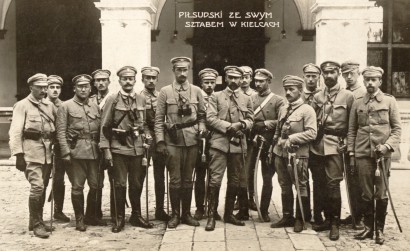You are invited to come and view an exhibition depicting the daily life of the Polish Legions.
In the summer of 1914, Józef Piłsudski, the leader of the Polish Riflemen’s Association (a legal paramilitary organisation in Austria-Hungary), began the attempt to create a Polish armed force. This evolved into the creation of the Polish Legions, called up by the Polish Supreme National Committee (NKN) in August 1914. Volunteers of various political viewpoints and social strata enlisted in the Legions: youths from Podhale villages, ordinary labourers, and even prominent members of the artistic intelligentsia and the professions.
The Legions forged their fame on the front lines against the Russians. They proved to be stalwart, motivated and courageous when faced with a well-trained and hardened enemy at Laski, Mołotkowo, Limanowa and Łowczówek in 1914. The First Brigade distinguished itself in the bloody, eight-day triumph at Konary in May 1915. During what was to become the Legions’ most famous battle, the 2nd Cavalry Squadron broke through three lines of Russian trenches in a daring charge at Rokitna on 13 June. Thus the legend of the Legions was born, subsequently strengthened by additional victories at Kukle and Kamieniucha in Volhyn, as well as the Battle of Kostiuchnówka in July 1916. During this last conflict, all three Legion brigades stopped the assault of a force of Russian troops three times larger than that of the Poles, preventing Russian encirclement of the Austro-Hungarian forces near a bend of the Styr River.
The Legions’ valour paved the way for the concept of offering the Poles their own semi-autonomous state, in exchange for the formation of a large army supporting Austria-Hungary and their German allies on the Eastern Front. The mere prospect of a Polish army fighting for the Kaiser forced the Allies to take a stand on the question of Poland and accelerated the mustering of Polish formations in various parts of Europe.
The exhibition The Polish Legions, 1914-1918 has been prepared by the Józef Piłsudski Central Military Library.
Partners: The Royal Łazienki Museum, TVP Historia. Media patrons: TVP 3 Warszawa, TVP Polonia, Radio Polska Live, the historical magazine Mówią Wieki, the monthly Do Rzeczy. Historia and weekly Tydzień Polski.
